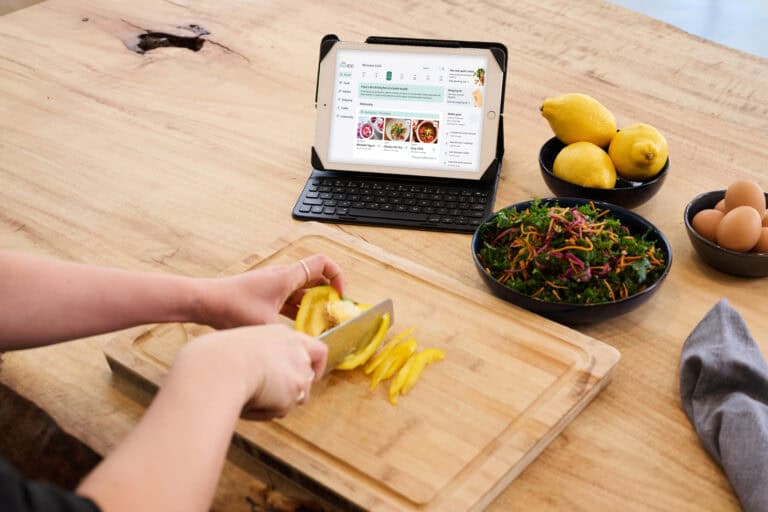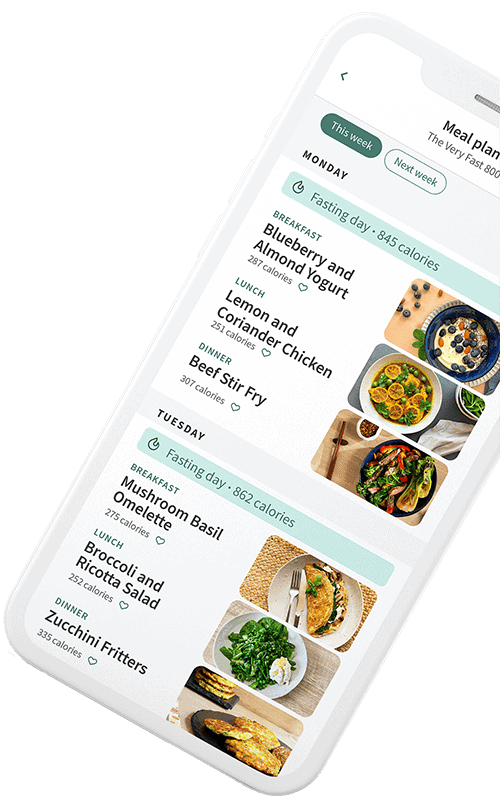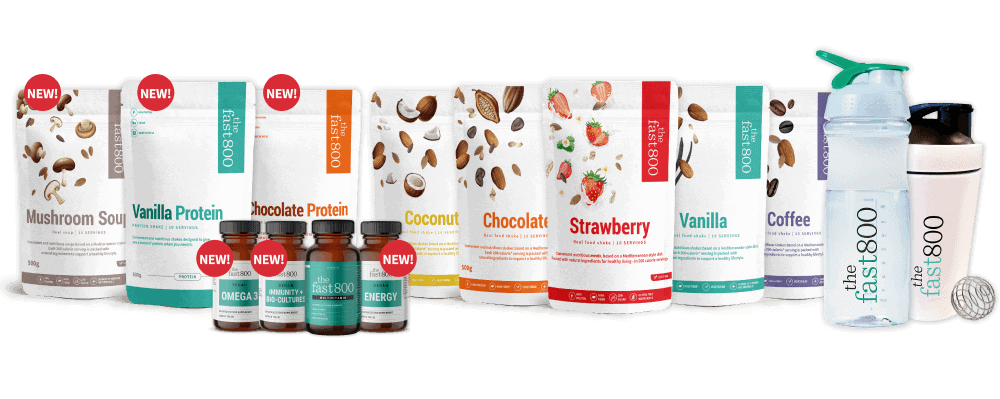How To Do The 5:2 Diet
This article will give you the basics needed to understand exactly how to do the 5:2 diet.
The 5:2 diet is one of the most popular forms of intermittent fasting and is a very simple concept. As a less intense form of significant calorie-restriction, The New 5:2 is ideal for those who have completed The Very Fast 800 approach and would like to adopt the practice of fasting over the long term, or those that wish to improve their metabolic health and lose some weight but would prefer not to commit to the 800 daily calorie programme.
Unlike most “diets”, it’s sustainable long-term due to its flexibility to be adapted to almost any lifestyle. While following the 5:2 diet, you should fast for two days of the week (by fasting, we mean reducing your calorie intake to 800 calories). For the remainder of the week, no calorie limits apply but in order to promote weight loss and good nutrition, we encourage people to apply the principles of a low-carb, Mediterranean-style diet, along with sensible portion control.
Although it’s often referred to as a “diet”, we know, from experience, that it can become a lifestyle. By giving you the freedom to choose your fasting days, you can align the 5:2 diet to your life and weekly schedule.
Join our email community
Learn more about The Fast 800 approach to healthy living by receiving our free content, health tips and recipes as well as exclusive offers, delivered straight to your inbox.
What foods should you eat?
Importantly, the quality of the calories you’re consuming must be taken into consideration. We recommend that you eat Mediterranean-style whole foods that will boost your metabolic health and allow you to eat your meals, without feeling the need to snack throughout the day.
Foods to eat on fasting days
On fasting days, where you’ll be eating around 800 calories per day, the quality of each calorie is just as important as the quantity. Interestingly, 800 calories can look like very little, or quite a lot, depending on the density of the calories.
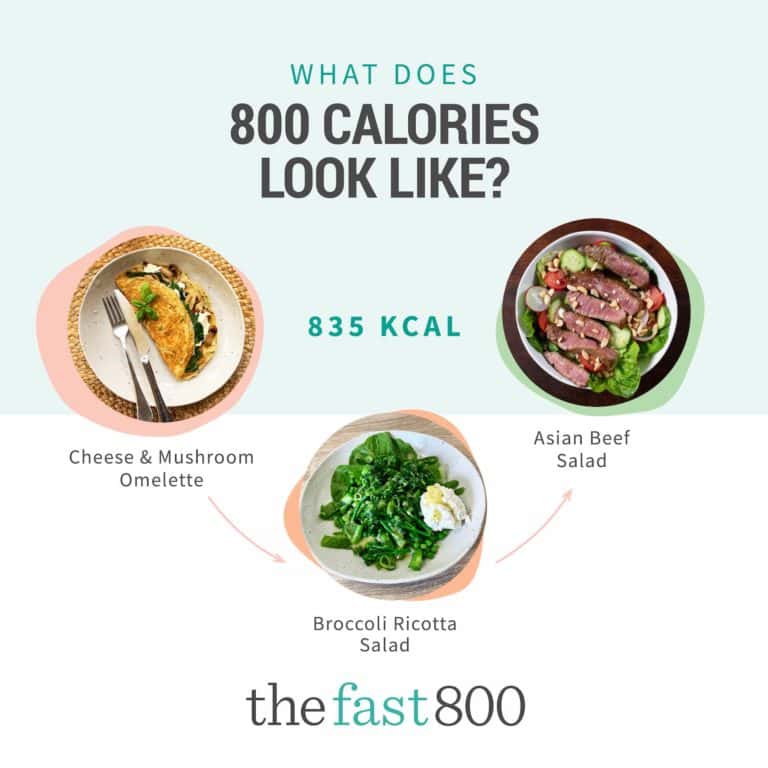
If you eat simple carbohydrates, like white pasta, white bread, chips and chocolate, that spike blood sugar quickly, your pancreas will release insulin attempting to mitigate hazardous changes in blood sugars. Insulin is a hormone released by your pancreas that helps glucose enter the cells to be used as energy. When cells in your muscles, fat, and liver don’t respond well to insulin they can’t easily take up glucose from your blood, meaning your blood sugar levels stay higher. With more sugar in your blood, your pancreas makes more insulin to help distribute the glucose. This becomes a vicious cycle called insulin resistance that can lead to developing type 2 diabetes.
Alternatively, eating foods high in protein, fibre and healthy fats will steady your blood sugars, encourage you to burn fat and keep you fuller for longer, which is far more sustainable and enjoyable.
Focus on low calorie, non-starchy vegetables, which The Fast 800 always encourages you to eat freely, without the need to count calories. Examples include, kale, spinach, broccoli, mushrooms and aubergine/eggplant.
Foods to include in your non-fasting days
On non-fasting days, we encourage similar principles that centre on a low-carb, Mediterranean-style diet. Our long-term goal for anyone following The Fast 800 is to get to a place where you eat to satiety and can maintain a healthy weight easily, without the need to count calories. By eating a diet rich in Mediterranean foods, such as oily fish, eggs, legumes and full fat dairy, you’ll feel full and satisfied, while eating a healthy and weight maintainable amount of calories.
It’s important, when starting the 5:2 diet, to consider counting calories on your non-fasting days to avoid overcompensating. The Fast 800 Online Programme helps you to stay organised and accountable, even on non-fasting days. The Online Programme gives you the structure you may be looking for to help keep you on track with meal plans, developed by our in-house nutritionist.
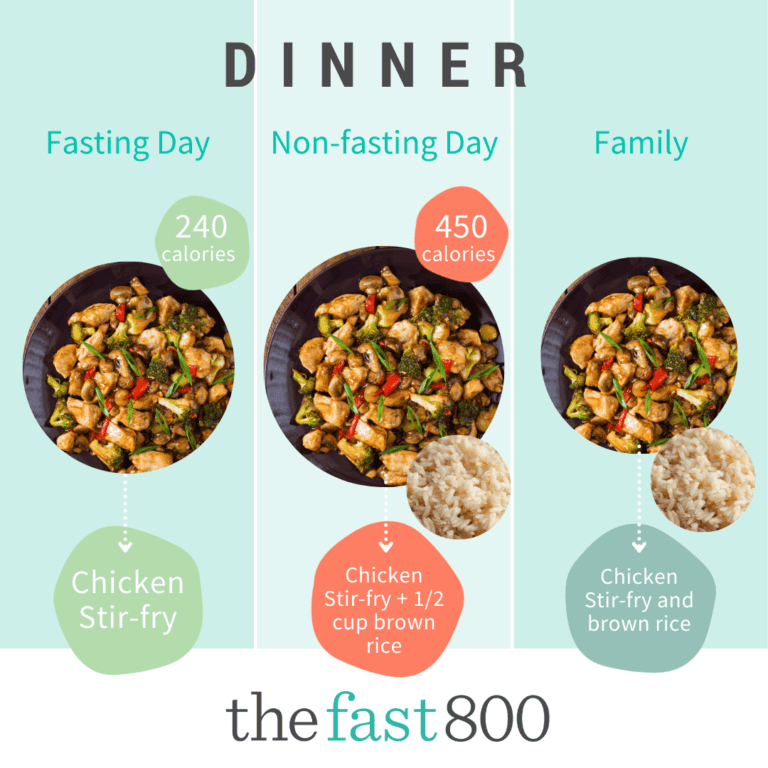
What are the health benefits?
The New 5:2 approach targets visceral, liver, and pancreatic fat. Studies have shown that when the body is significantly deprived of food, it prioritises burning fat deposits in and around the organs over burning fat found more superficially beneath the skin.
It doesn’t take long on The New 5:2 approach for the body to respond and start to reverse the processes that would lead to prediabetes or type 2 diabetes. Muscle and liver cells become more sensitive to insulin. The pancreas, no longer under the stress of frequent sugar-spikes, is better able to regulate its insulin output.
As a programme for weight loss, intermittent fasting is immensely powerful but its benefits go further than reversing diabetes and burning fat. By placing the body in “famine” rather than “feast” mode, cellular shifts occur which favour repair and longevity over short-term activity; resulting in;
- Switching-on of repair genes (by fasting, the body has a chance to break down and recycle old and tired cells);
- Activation of anti-cancer processes in the cell cycle;
- A fall in levels of Insulin-Like Growth Factor 1, which can promote ageing;
- Improved cognitive performance;
- Better mood;
- Lower blood pressure;
- Better energy levels due to greater insulin sensitivity; and
- Lower cholesterol levels: fasting can help reduce LDL, which is known as the ‘bad’ form of cholesterol, as it carries cholesterol into the walls of your arteries.
- A recent trial (2021) recognised that the 5:2 diet may even contribute to the reduction of skin symptoms in patients with psoriasis.
Our top tips for the 5:2 diet
- Schedule your fasting days on days where you know you’re going to be kept busy! Also, we find that it’s best to avoid fasting days when you know you have a social event to attend.
- Drink plenty of water throughout the week
- Follow a meal plan on non-fasting days, when you get started, to avoid overeating to compensate for fasting days.
- Super-charge your plan by integrating time restricted eating (TRE); TRE is another form of intermittent fasting where you consume all of your calories within a window of time and fast for at least 12 hours per day (overnight) to allow your body to rest. Popular forms of TRE are 12:12 (eat for 12 hours, fast for 12) or 14:10 (eat for 10 hours, fast for 14). While some people choose to practice 16:8 TRE, we find that this is often unsustainable long-term and in order to suit your lifestyle, 14:10 provides the best balance between maintainability and health benefits.
“Five months after starting The Fast 800 I reached my target of three stones lost. I’ve gone on to lose a few more pounds to bring my total to 45lbs. I have a whole new figure, necessitating a whole new wardrobe! I feel wonderful, am much more active, and have no joint pain. This WORKS!”
Yvonne from Dorset lost 20kgs
START YOUR FREE TRIAL TODAY!